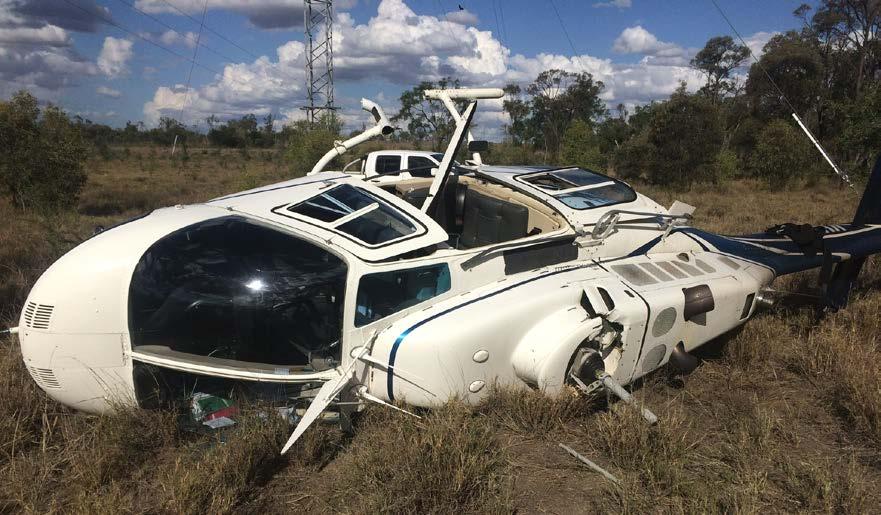An ATSB investigation into the collision with terrain involving a Bell 206 helicopter shows how rapidly emergency situations can develop.

The accident occurred 75 km north-east of Emerald Airport, Queensland, when the helicopter was conducting power line inspections. The pilot had positioned the helicopter in a hover 30 feet above the ground and 40 metres from a transmission tower so that it could be photographed by a crew member.
After a short period of hovering, the pilot heard a ‘very loud bang’ through the airframe, which was also felt through the controls. The helicopter began to shake violently and bounce vertically. The pilot also reported seeing tiny pieces of debris falling in front of the helicopter.
In response, the pilot immediately lowered the collective intending to land in a clear area below, however the helicopter did not respond to collective or cyclic control inputs. Instead, the helicopter began to pitch upward and drift backwards before yawing to the right. The yaw could not be controlled with the tail rotor pedals, so the pilot moved the throttle to the idle position.
Despite attempts to remain level during the landing, the left skid contacted the ground and the helicopter rolled over. The pilot and crewmember were uninjured.
While recognising that on this occasion the pilot had limited control authority, the safety message from this investigation is regular practice and briefings of emergency actions will increase the likelihood of a correct response during an emergency situation.
An examination of the helicopter identified that the mast, both pitch links, and the swashplate were fractured. The fractured components and trunnion bearings (connecting the pitch links to the rotor blades) were sent to Bell Helicopter’s Engineering Laboratories for detailed examination. Bell Helicopter concluded that all of the fractures, including that resulting in the mast collar separation, were a result of overstress.
There were no findings made during the inspection that identified the probable factors contributing to this occurrence.
This investigation highlights how rapidly an emergency situation can develop. While recognising that on this occasion the pilot had limited control authority, the safety message from this investigation is regular practice and briefings of emergency actions will increase the likelihood of a correct response during an emergency situation.
Read the report: Collision with terrain involving Bell 206, VH-SDZ, 75 km north-east of Emerald Airport, Queensland, on 18 November 2017


